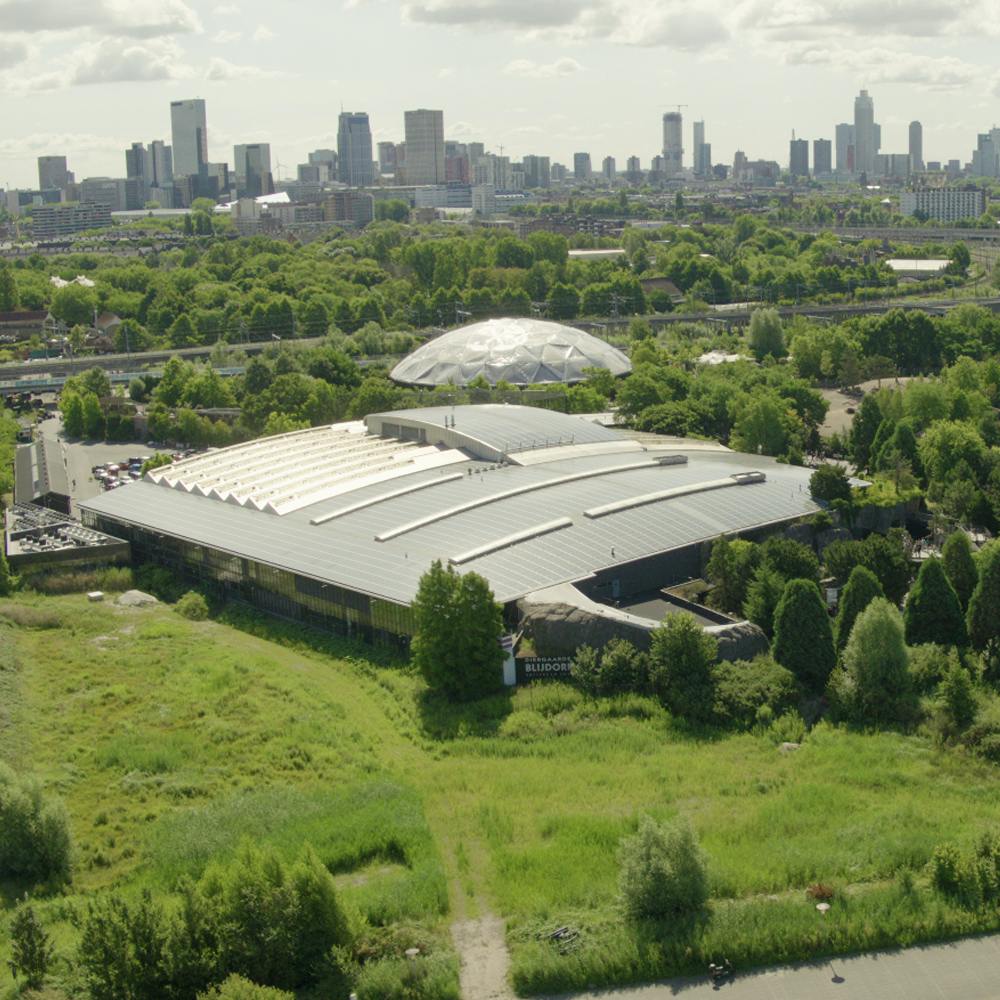
At Blijdorp, we strive to use sustainable energy wherever possible. This includes replacing much of our lighting with LED lighting, generating our own energy using solar panels on the roof of the Oceanium, and heating the Crocodile River with a woodchip heater.

Blijdorp is a pioneer in the world of zoos when it comes to introducing LED lighting. That's why we participated in the Illuminate project, a European initiative aimed at saving energy and costs.
At ten different locations, traditional lighting has been replaced, totalling over a thousand lamps. This switch has allowed us to save thirty percent of energy, which amounts to approximately 170,650 kWh, equivalent to the energy consumption of nearly fifty households in a year, and a cost savings of around 38,000 euros annually. This is a prime example of how Blijdorp is becoming more sustainable and economical.
A large solar energy plant has adorned the roof of the Oceanium since January 2004, making it the largest solar energy plant within the city limits of the Netherlands at that time. The roof is equipped with 3,400 solar panels, which can generate enough electricity for over a hundred households. In a zoo, everything revolves around the animals, which is why the solar energy is directly utilized in the Oceanium to cool the penguin enclosure. Additionally, due to its visibility, the project serves an important educational purpose. To generate even more solar energy, the solar roof will be completely replaced in 2024. After this, we will be able to produce twice as much solar energy as with our current solar roof.

The crocodiles at Blijdorp are kept warm thanks to the wood chip heater located next to the Crocodile River. This central heating boiler uses wood chips instead of fossil fuels, which is better for the environment. The wood chips come from sawmills in the Veluwe and from pruning done by the Municipality of Rotterdam. They responsibly harvest trees for the sawmills. After the planks are cut, there are always wood remnants left, and these end up in Blijdorp's wood stove. The heater has a capacity of 350 kilowatts and burns approximately 1,500 cubic meters of wood chips per year. The energy generated by this is roughly equivalent to the average energy consumption of ninety households (108,000 cubic meters of gas). So, Blijdorp saves a considerable amount of fossil fuel.
Moreover, our wood chip heater is relatively clean in terms of emissions. The heater has a combustion efficiency of ninety percent, resulting in minimal smoke and particulate matter. Any gases emitted are not released directly; they are first filtered by a cyclone cleaner.
Blijdorp also saves when it comes to CO2 emissions by using our heat-cold storage system. In the winter, Blijdorp stores cold air to use it in the summer. In the summer, we do the opposite; we capture warm air and use it in the winter. With the current heat-cold storage system, we can heat or cool the Oceanium and the entire entrance area, including the Lepelaar restaurant. If the full capacity is utilized in the future, we will save approximately 751 kg of CO2 emissions per year. This is equivalent to the CO2 emissions of one hundred households.

In Blijdorp, we have access to a fully electric car, the BMW i3. Besides not using fossil fuels for driving, this car is also sustainable in other ways. During its production, great consideration was given to sustainability. For instance, the energy required to manufacture the car is derived 100% from wind power. Moreover, many of its components are made from renewable materials, and 34% of its upholstery is composed of recycled PET bottles.
Apart from our efforts within the garden, we also aim to make a difference beyond our borders by reducing CO2 emissions. Blijdorp seeks to inspire visitors to care for nature, which is why we have ten charging stations where guests can charge their electric cars. This initiative is made possible in collaboration with the Municipality of Rotterdam. In 2024, we will even add more charging points. So, at the end of a delightful day out, you can drive back home worry-free, knowing you've contributed to a greener world!

Blijdorp is currently sourcing its energy from solar power generated in Europe. Starting in 2024, we will transition to using more local energy: wind energy generated right here in Rotterdam. Additionally, the gas we use will be entirely offset by investing in CO2-reduction projects. Looking ahead, our goal for the future is for Blijdorp to be entirely climate-positive within ten years. This means that we will remove more greenhouse gases from the atmosphere than we emit.